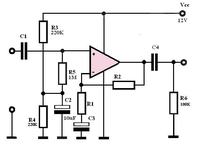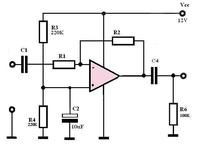hkBattousai
Advanced Member level 4

simple symmetrical power supply
Does the mostly used opamp circuits (e.g., inverting amplifier, non-inverting amplifier, differentiator, integrator, difference amplifer, voltage follower, etc) would work if we don't use a symmetric voltage source (i.e., we apply a positive voltage value at the 7th pin of LM741 and ground the 4th pin)?
I have a single output power supply and I don't want to put an voltage inverter in my every opamp circuit. Is there a simple way to feed opamps from a single power source?
Does the mostly used opamp circuits (e.g., inverting amplifier, non-inverting amplifier, differentiator, integrator, difference amplifer, voltage follower, etc) would work if we don't use a symmetric voltage source (i.e., we apply a positive voltage value at the 7th pin of LM741 and ground the 4th pin)?
I have a single output power supply and I don't want to put an voltage inverter in my every opamp circuit. Is there a simple way to feed opamps from a single power source?






